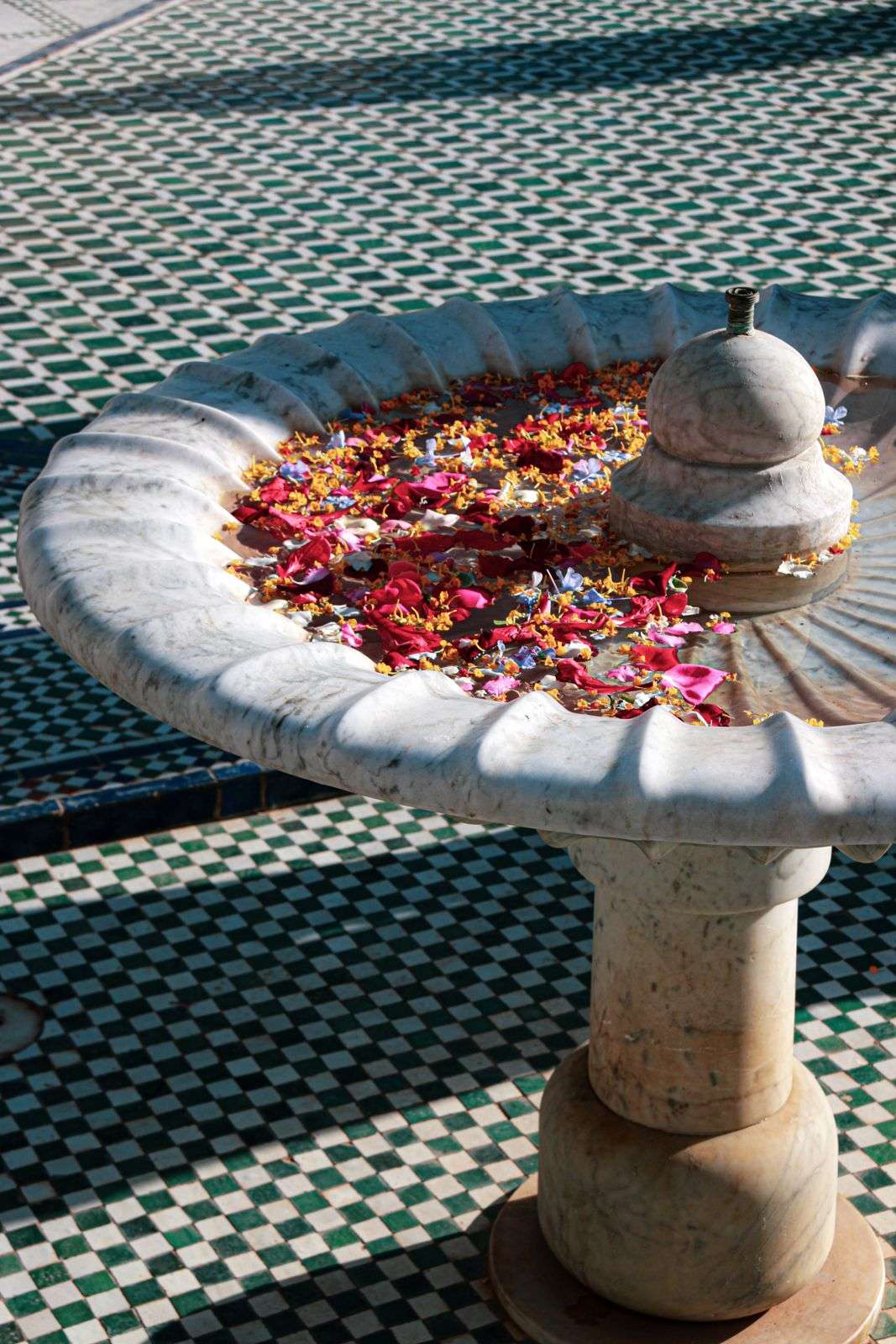With a rich history dating back to the 3rd century BC, Volubilis is a UNESCO World Heritage site and one of the most important archaeological sites in North Africa.
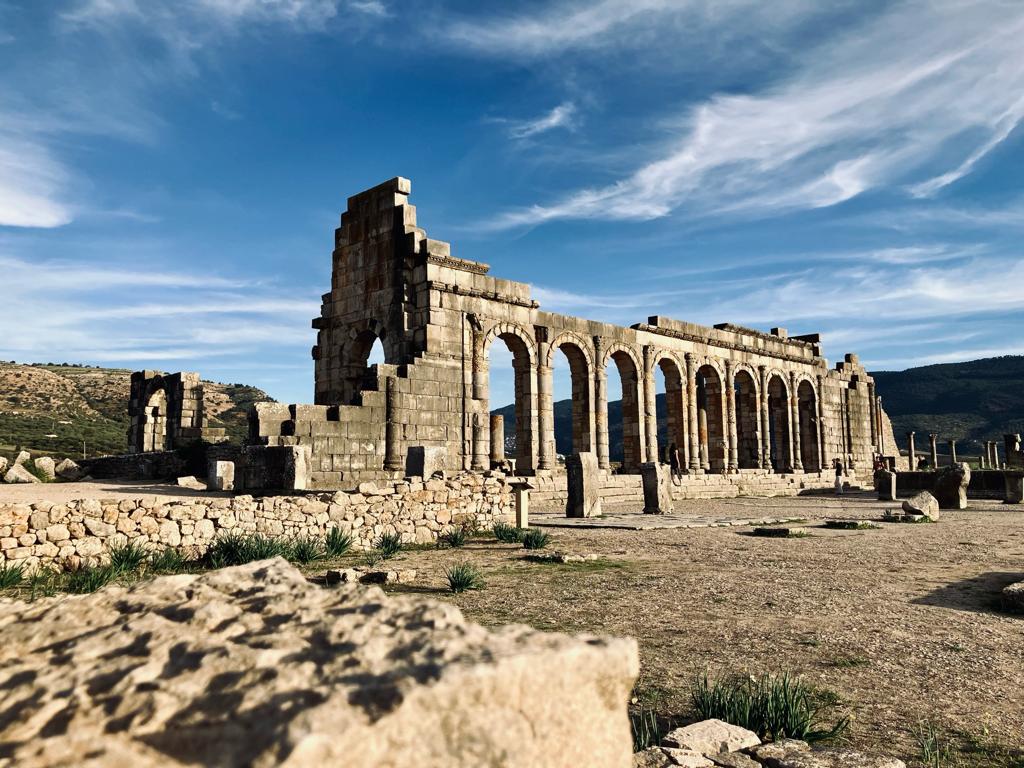
Chronicles of Antiquity
Nestled near Fès in the Jebel Zerhoun Plain of Morocco, the archaeological marvel of Volubilis stands as a silent witness to the epochs that have shaped North Africa’s narrative. In the 1st century BC and AD, under the reign of the Mauretanian king Juba II, Volubilis blossomed into a thriving hub of late Hellenistic culture. Its trajectory shifted dramatically when annexed to Rome around AD 44, earning the status of a municipium — a community bestowed with partial rights of Roman citizenship.
The city’s loyalty to Rome during the revolt of Aedmon saw it rise to prominence, becoming the chief inland city of the Roman province of Mauretania Tingitana. However, as the pages of history turned, Volubilis and its surrounding hinterland were abandoned around 285 AD during Diocletian’s reorganization of Mauretania Tingitana.
Known to the Arabs by various names, including Oulili, Walīla, or Walīlī, Volubilis found a new chapter in its story after 788. It became the capital of Idrīs I, the visionary founder of the Idrīsid dynasty, marking a seamless transition from Roman grandeur to the vibrant legacy of Islamic influence.
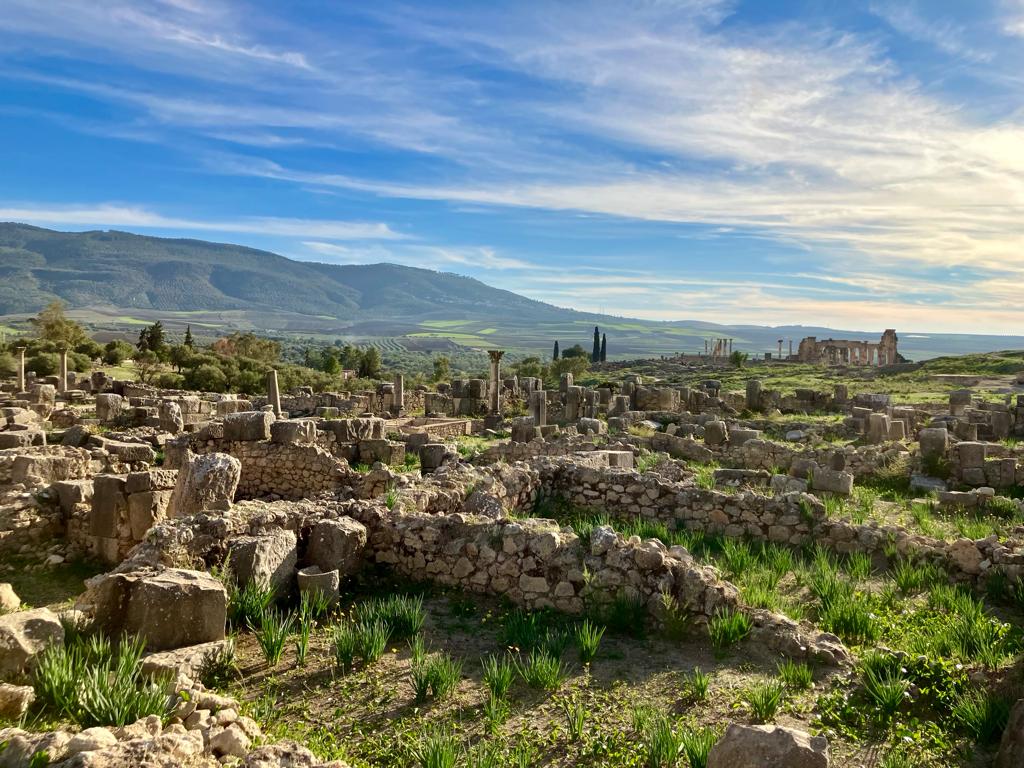
For centuries, Volubilis echoed with the vibrant pulse of life, standing as an active and inhabited city until the 18th century. Despite weathering the ravages of time, its historical structures retained their splendor until an earthquake in the 1700s left its indelible mark. Some of Volubilis’ marble, prized for its beauty, found new purpose in the construction of Meknes.
Architectural Splendors
As you approach Volubilis, the silhouette of impressive Roman columns and arches emerges on the horizon, an awe-inspiring spectacle visible from a distance. Closer inspection reveals the grandeur that once permeated the Roman Empire, evoking a sense of stateliness that continues to captivate modern visitors.
Among the architectural gems, the Triumphal Arch, Basilica, and towering columns of the Capitol stand as particularly spectacular remnants. Each structure offers a perfect backdrop for capturing the essence of your visit to Volubilis through the lens of your camera, a tangible connection to the historical splendor of this ancient city.
Venturing beyond the visual splendors, intricate mosaic floors, defying the erosion of time, await discovery. While many are cordoned off to preserve their delicate beauty, you can still marvel at the remarkable craftsmanship that has endured the centuries, offering a vivid glimpse into the artistic richness of Volubilis.
A stroll amidst the ruins transcends mere observation, immersing you in the daily life of the ancient city. Explore a preserved bakery, complete with kneading equipment frozen in time. Witness olive oil presses that once fueled export activities, and marvel at the mechanisms of an ancient well that sustained the community. Traverse the impressive houses of Dionysis, Euphebus, and Orpheus, each unveiling stories of the city’s erstwhile residents.
Climbing the steps of the Capitol, you’ll find yourself dwarfed by the towering columns, a humbling experience that transports you back to an era where these structures bore witness to the bustling life of Volubilis. As you navigate this archaeological wonder, every corner reveals a chapter of ancient Roman city life, inviting you to become a part of the narrative and relive the echoes of a civilization that thrived amidst these captivating ruins.
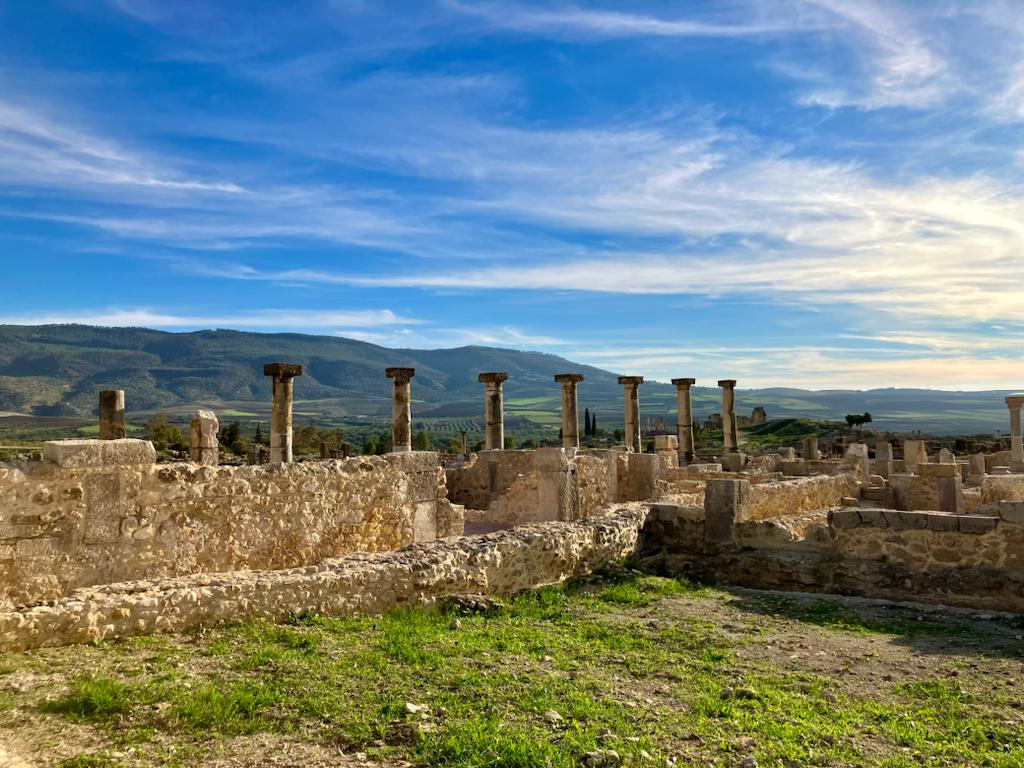
Cultural Crossroads
Nestled strategically near the Atlas Mountains, Volubilis unfolds as a cultural crossroads, where the tapestry of Roman, Berber, Phoenician, and Carthaginian influences seamlessly converges. The city’s prosperity and cosmopolitan character are eloquently etched in the remnants of its structures, offering a compelling narrative of a harmonious blend of diverse traditions.
As the gateway to the Western edge of Roman Africa, Volubilis enjoyed both strategic significance and scenic allure. Perched at the base of the Rif Mountains, the city’s panoramic view, now overlooking the charming town of Moulay Idriss, was a testament to its commanding position. From this vantage point, Volubilis offered a captivating panorama of the surrounding countryside, a visual symphony that mirrored the dynamic cultural interplay within its walls.
The low mountainous terrain surrounding Volubilis proved to be not just strategically advantageous but also agriculturally ideal. The region became a fertile ground for cultivating olives and grains, a symbiotic relationship with the land that flourished under the Roman influence. This agricultural bounty played a pivotal role in the economy of Roman Africa, with the export of olive oil and wheat to Rome becoming central to the region’s prosperity.

UNESCO Recognition and Preservation
In a testament to its enduring significance, Volubilis was given the prestigious recognition of a UNESCO World Heritage Site. This honor, received in 1997, elevates Volubilis beyond its historical importance, underscoring its universal cultural value.
The UNESCO recognition stands as a beacon, drawing attention to the need for preservation and collective stewardship of this archaeological gem. It signifies not only the rich historical tapestry woven into Volubilis but also the global commitment to safeguarding our shared heritage.
The collaborative efforts between Moroccan and international preservation teams take center stage in this endeavor. Meticulous restoration work has breathed new life into key structures, allowing present-day enthusiasts to traverse the corridors of time and witness the city’s former magnificence with unprecedented clarity.
More than a mere accolade, UNESCO’s recognition infuses a sense of responsibility — a duty to protect and pass on this extraordinary legacy to future generations. As Volubilis stands at the crossroads of cultures, its preservation becomes a shared endeavor, transcending borders and echoing the collective commitment to cherish the threads that weave our shared human story.
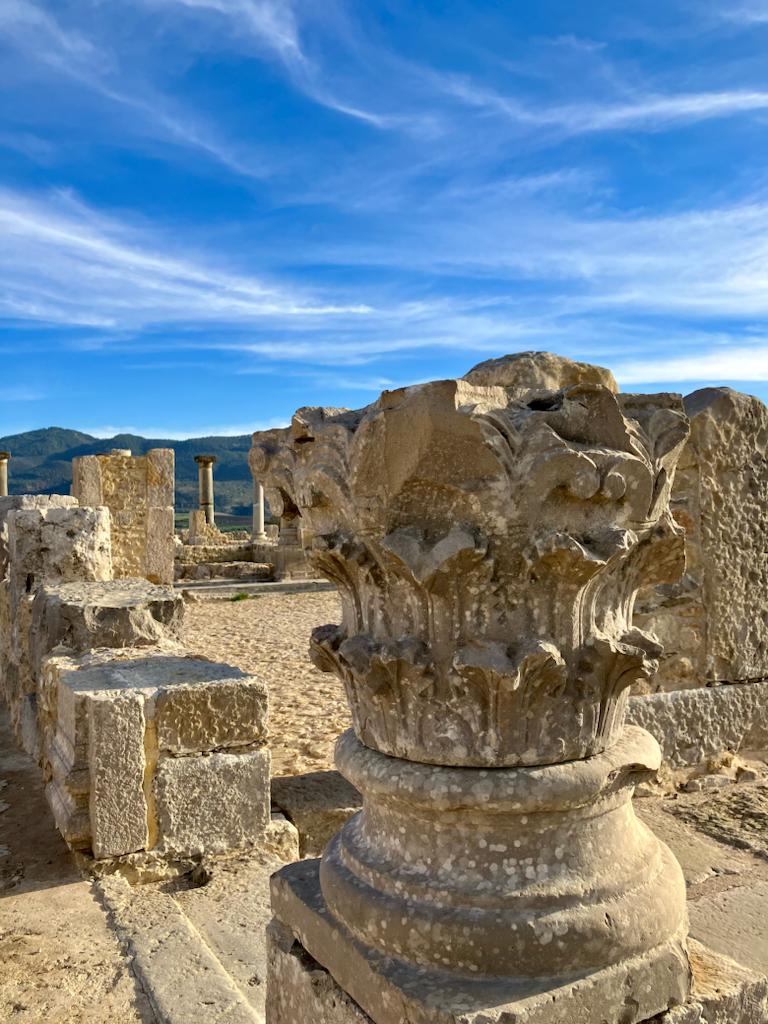
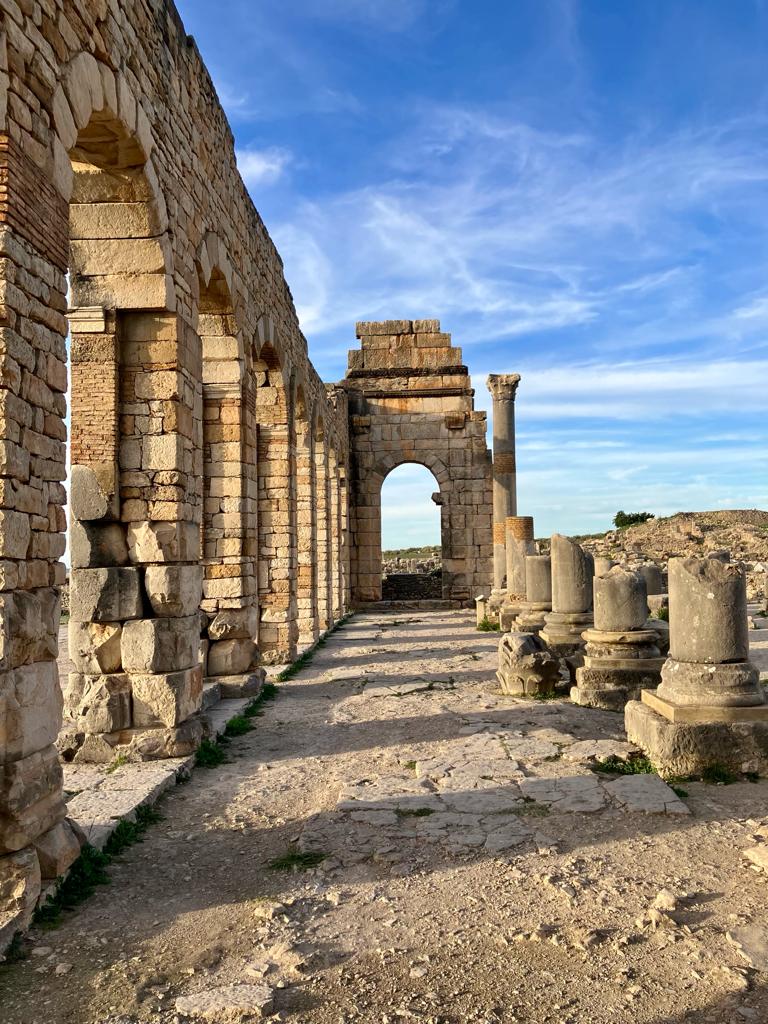
A Tranquil Escape
Beyond its historical significance, Volubilis offers a serene escape into the Moroccan countryside. Surrounded by olive groves and overlooking the fertile plains, the city provides a tranquil setting for contemplation and appreciation of the connection between history and nature.
Getting to Volubilis is easy, just a short drive from both Moulay Idriss and the Imperial City of Meknes. It’s an ideal day trip destination, fitting seamlessly into your journey between the vibrant cities of Fez, Rabat, and Casablanca. Whether you’re exploring the nearby attractions or weaving Volubilis into your broader Moroccan adventure, the accessibility of this UNESCO World Heritage Site promises a rewarding and culturally enriching experience. Book our tour today!

